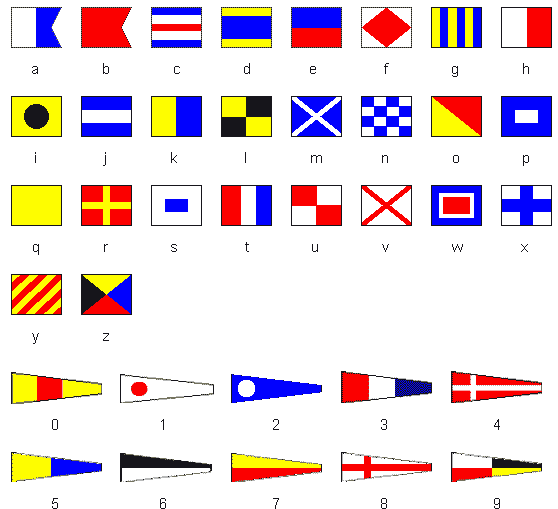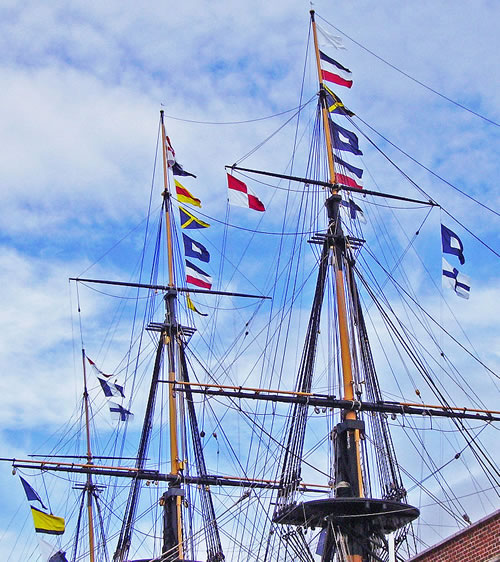These flags are used at sea for communication between ships. They can spell out short messages, and individual flags and various combinations of flags also have special meanings. On ceremonial and festive occasions the signal flags are used to 'dress' (decorate) ships.
This signalling system was drafted in 1855 and published in 1857, and was gradually adopted by most seafaring countries. It was revised in 1932.


England expects that every man will do his duty.
- this was the signal sent by Admiral Horatio Nelson on 21 October
1805 from his flagship HMS Victory just before the Battle of Trafalgar began.
Source: http://en.wikipedia.org/wiki/England_expects_that_every_man_will_do_his_duty
Further details of Martime Signal Flags
http://www.boatsafe.com/nauticalknowhow/flags.htm
http://en.wikipedia.org/wiki/International_maritime_signal_flags
http://www.marinewaypoints.com/learn/flags/flags.shtml
International Signal Flags Translator (Maritime Signal Flags & Semaphore Flags)
http://www.marinewaypoints.com/learn/flagtrans/flags.shtml
Other signal flag systems
http://www.pem.org/archives/guides/signals.htm
Signalling at sea
http://home.earthlink.net/~mcmillanj/signals/Signals.html
Maritime Signal Flags, Morse code, Semaphore
Page last modified: 23.04.21
[top]
You can support this site by Buying Me A Coffee, and if you like what you see on this page, you can use the buttons below to share it with people you know.

If you like this site and find it useful, you can support it by making a donation via PayPal or Patreon, or by contributing in other ways. Omniglot is how I make my living.
Note: all links on this site to Amazon.com, Amazon.co.uk
and Amazon.fr
are affiliate links. This means I earn a commission if you click on any of them and buy something. So by clicking on these links you can help to support this site.
[top]